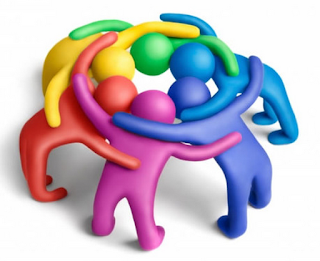Perspectives on Diversity and Culture
Perspectives on Diversity and Culture
My Perspectives on Diversity and Culture
Which aspects of culture and diversity that I have studied in this course are included in the answers I received—and what are some examples?
Upon interviewing some colleagues on the definition of culture and diversity, I was able to relate then to the information I have studied in our class Perspectives on Diversity and Equity, my colleagues defined culture as the way in which people live and co-exist with each other. One of the colleagues explained that a culture needs not be a society or a natural person. A legal entity such as a school or institution can also have a distinct culture. Another colleague asserted that a person might possess more than one cultural setting at any given time. The final is because nowadays, the world is a global village and people assimilate various cultures in the endeavors and dispositions. Another of my colleague gave quite a unique response that we as human beings all belong to one culture, the human culture. He explained that people cannot have differing cultures, but they can only have diversities. They defined diversity as the differentiation among people. These differentiations include age, education, lifestyle, color, sexual orientation, religion, and race. They explained that this distinction is brought about by different cultural settings and environmental settings. As studied in this course, culture and diversity are intertwined philosophies of human life. The diverse cultures of people lead to the variety of individuals.
Which aspects have changed—and what are some examples of such omission?
In their definitions, they did not thoroughly define the scope of culture. Culture is also defined as a set of values and customs. Also, the colleagues failed to appreciate the significant features of culture such as the idea of dominant culture and family (less dominant) culture. They seemed not to understand the essence of cultural discontinuity and cultural continuity. The aspect of power in culture was also omitted. However, different cultures have different socio-economic power, and this determines their dominance in the society or a given setting, and these facets seem like a norm in their eyes. My colleagues left out other characteristics of diversity such as disability, ethnicity/national origin, family status, life experiences, physical characteristics, and language.
In what ways has thinking about other people’s definitions of culture and diversity influenced my thinking about these topics?
Other definitions of culture and diversity have inclined my thinking in a progressive manner. In particular, the statement by one of my colleagues that there is only one culture and i.e. the human culture provoked my thinking. To some extent, his definition makes sense that the human culture is the supreme culture that all persons contribute too, however, due to the various aspects of diversities and personal attributes, there are now multiple cultures within the human culture.
Especially, people who define and relate these terms i.e. culture and diversity depending on their life experiences and dispositions. Personally, I associate with the definition of these terms as stipulated in my course. Culture remains the way we conduct our daily endeavors while diversity is the differentiation in human beings due to various aspects. The issue of whether human culture is the only viable culture is speculative. I perceive human culture to be a dominant and prime culture and not a single culture. After that, people can have other cultures depending on their society or environment setting.
Walden University M.S. in Early Childhood Studies
Criteria for Blog Assignments
|
Quality of Work Submitted
|
Exemplary
Work reflects graduate-level critical, analytical thinking.
(2 points for initial post; 1 point for each comment)
|
Satisfactory
Work reflects some minimal effort.
(0-2 points for post;
0-1 point for each comment)
|
Unsatisfactory
Work reflects no effort.
(No blog post shown; no comments given)
|
|
Adherence to Assignment Expectations
The extent to which work meets the assigned criteria.
|
Assignment meets expectations
All key components are included
|
Assignment is close to the expectation.
Some key components are included.
|
Does not fulfill the expectations of the assignment.
Key components are not included.
|
|
Final Assignment Grade
|
4/4 points
|
1-3/4
|
0/4
|
It is expected that all blog assignments will be submitted according to the assignment due dates indicated. Exceptions may be made at the discretion of the faculty member if contacted by the student prior to the due date describing extenuating circumstances.
(2 points maximum for original post and 1 point maximum for each comment.)
Updated: 1.3.12


I am not sure if I set this new blog up correct. I hope all can see my post
ReplyDeleteyes I can see thanks
DeleteWow I like the idea that there is only one culture, the human culture. This is true in my mind too because we all have different variations if the same species of culture. Being open to others is the struggle not the actual differences.
ReplyDeleteRobin engel
robin.engel2@waldenu.edu